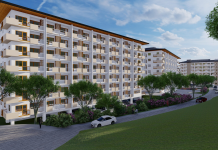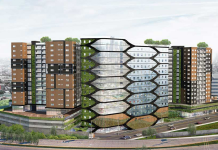
We’ve provided an overview of buying South Korean property, a market overview and a look at the Gangnam district (check out the articles here, here and here) this week. To conclude our series on the South Korean capital, will do a brief comparison of the Seoul and Metro Manila property market.
For starters, it’s important to note the Seoul and Metro Manila property markets are in different stages. Seoul is a developed market that comes with far less risks. Metro Manila on the other hand is still an emerging market, offering both greater upside and more risk exposure.
This is far from a complete overview, but here is a brief, side-by-side look at the Seoul and Metro Manila property markets.
Understanding the Seoul and Metro Manila property markets
Ownership regulations
Seoul

South Korea has very open laws when it comes to foreign property ownership. Foreign nationals buying Seoul property can acquire apartments, landed houses, entire buildings and land. The only thing they can’t buy is land in military installation reservations, cultural property protection zones or ecosystem reservation districts.
Metro Manila
Former Filipino citizens, Balikbayans and OFWs are free to purchase property in the Philippines, but there are some restrictions when it comes to land. Foreign nationals can own freehold condominium units in the Philippines but this group may take up no more than 40 percent of a single building. There are a few single-detached homes or townhouses in the Philippines with condominium titles that can be owned by foreigners. International buyers may not acquire land but can own houses built on locally owned land.
Property price growth
Seoul
According to the Korea Appraisal Board, Seoul apartment prices rose by 8.22 percent from the previous year. This was the highest price increase in 12 years. Seoul’s Gangnam district recorded some of the most significant home price jumps. The average apartment price in Gangnam increased by nearly KRW 200 million (USD 178,000) between May 2016 and May 2018.
Metro Manila
Residential property prices in Metro Manila rose by 8.8 percent in 2017 and 2018. This price growth has been even more significant in specific areas. For example, home prices in the Bay Area rose by 65 percent in 2018 with significant demand coming from overseas buyers.
Cost

Research from the National Assembly Research Service showed that the median price for a Seoul home was KRW 716 million (USD 637,000/PHP 33 million) in 2018. The median home price in Makati, one of Metro Manila’s most expensive areas, was roughly PHP 7.4 million, according to data from Dot Property Philippines.
To put this in perspective even further, for the median price of a Seoul home, it would be possible to purchase five, one-bedroom units in Lush Residences. This Makati development from SMDC is located right off Ayala Avenue, the Wall Street of the Philippines.
Market Factors
Seoul
The skyrocketing property prices in Seoul have seen the government intervene on several occasions. Cooling measures have been put into place since 2017. These include more home loan restrictions and the creation of anti-speculation zones in Seoul that have stringent regulations in place. If prices keep climbing in 2019, more regulations will likely be enacted.
Metro Manila
The Bangko Sentral ng Pilipinas (BSP) raised interest rates five times in 2018 in order to control money flows in the economy. The majority of banks ended up passing the buck on to consumers looking for a loan. Overseas buyers and OFWs have taken advantage of the inflation spike in the Philippines that has made the US dollar and other currencies stronger against the peso.
Final look
The Seoul and Metro Manila property markets both face challenges in 2019 and beyond, especially locally. The South Korean economy is in the midst of a slump with the Seoul real estate situation not helping matters. Meanwhile, climbing interest rates and a weaker peso could harm domestic demand in Metro Manila.
The one positive for the Philippines is a growing, young middle class that will have spending power. Home prices remain obtainable in Metro Manila even if interest rates continue to climb. The same cannot be said about Seoul, where an estimated 90 percent of people in their 20s and 30s are renters.




















